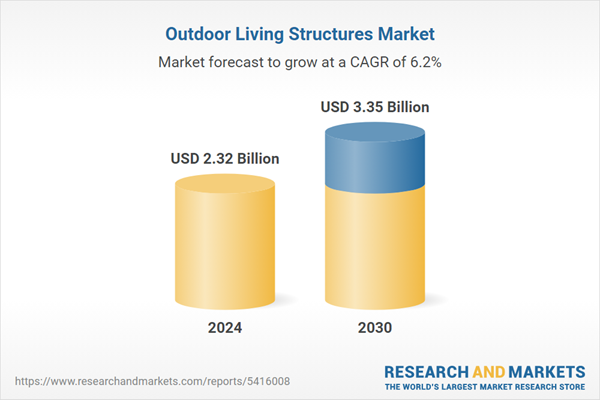Several hospitality companies are constructing commercial holiday homes in hilly tourist areas with several luxurious and modern amenities for both indoor and outdoor applications. They provide outdoor facilities for fireplaces, cooking, spas, poolside bars, game spots, and music areas. This involves the usage of several outdoor living products, thus creating new growth opportunities in the market.
The market for outdoor living structures in Europe is driven by key factors such as the need for an improved and luxurious lifestyle, increasing per capita income, the presence of developed economies, and rising investments in residential constructions and landscaping projects. A rise in demand for applications such as lawn and yard maintenance, outdoor cooking, gardening, outdoor designing, and landscaping is anticipated to propel the European market growth.
The major raw materials utilized in outdoor living structures include concrete, wood, ground covers, granite, stainless steel, glass, and aluminum. The usage of raw materials in these structures is usually dependent on the demands and requirements of homeowners given to architects and structure manufacturers. Manufacturers tend to collaborate with raw material suppliers via third-party agreements for timely availability and supply of materials as per customer demands. The key raw material suppliers include Hurford Hardwoods USA, Pacific Coast Teak, U.S. Concrete, Central Concrete, CEMEX S.A.B. de C.V., and Cleveland-Cliffs Corporation.
The manufacturing of outdoor living structures is entirely dependent upon the preferences of end users (homeowners and construction companies) regarding the design specifications, materials, and colors, leading to high buyer power. The market is controlled by regional-level manufacturing companies, leading to limitations in bargaining power. The bargaining power of buyers is expected to be medium over the forecast period.
The market for outdoor living structures is expected to slow down due to its limited target customers. High-income households typically favor outdoor living structures with large lawns and backyards. The market represents a very small portion of the world’s population, mainly concentrated in high-income countries in North America and Europe.
Outdoor Living Structures Market Report Highlights
- The market was dominated by pergolas/patios in 2024, with a revenue share of more than 64.3%. This is attributed to its low price as compared to the pavilion/gazebo and easy construction.
- The pavilions/gazebo market segment is expected to grow at the fastest compound annual growth rate (CAGR) of 7.0% over the forecast period from 2025 to 2030 due to their versatility and aesthetic appeal
- The North America region dominated the global market in 2024 with a revenue share of 42.9%. The need for high-quality life and the introduction of new trends in the building and construction industry is anticipated to drive outdoor living structures in North America.
- The major factors for the growth of key companies are their continuous product innovation to meet consumer demands, offering of personalized outdoor living structures, and more environmentally conscious product offerings.
This product will be delivered within 1-3 business days.
Table of Contents
Companies Mentioned
- Absolute Outdoor Living
- Renson Inc
- Brown Jordan Inc.
- Barbeques Galore
- Corradi
- Scandia Canada Ltd.
- Luxos
- Baldwin Lawn Furniture and Pergolas LLC
- Pavion Corp.
- Sunesta
Table Information
| Report Attribute | Details |
|---|---|
| No. of Pages | 100 |
| Published | January 2025 |
| Forecast Period | 2024 - 2030 |
| Estimated Market Value ( USD | $ 2.32 Billion |
| Forecasted Market Value ( USD | $ 3.35 Billion |
| Compound Annual Growth Rate | 6.2% |
| Regions Covered | Global |
| No. of Companies Mentioned | 10 |









